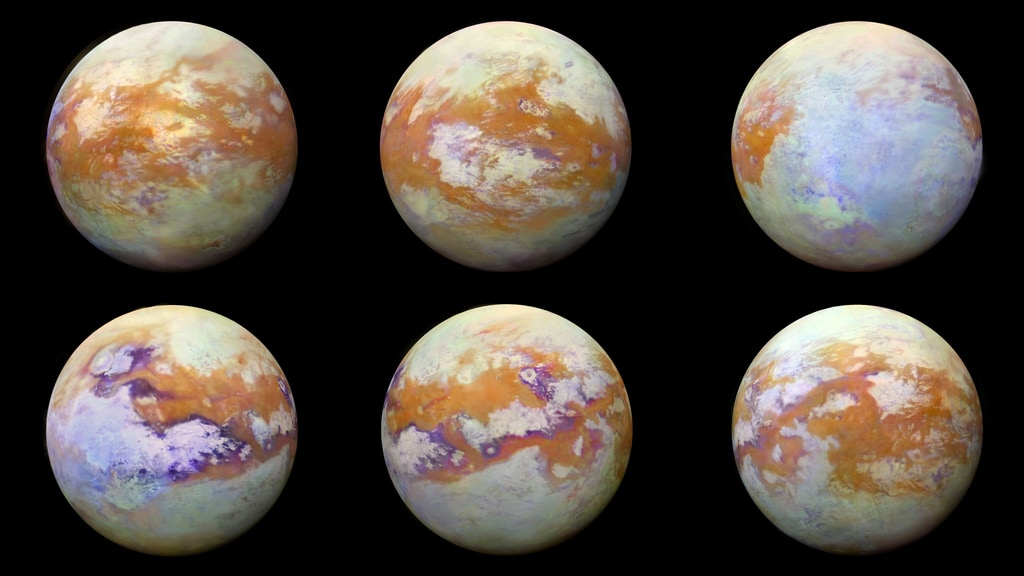A team of scientists from NASA has identified a weird and extremely rare chemical in Titan’s atmosphere that has never been detected in any other atmosphere. The chemical they have discovered is cyclopropenylidene (C3H2).
Cyclopropenylidene, a carbon-based molecule is so reactive that it can only exist in laboratories on earth. This molecule reacts very quickly and easily with other molecules, forming other compounds. The only place it is found is the interstellar space.
As any molecule in interstellar space is cold, diffuse and doesn’t interact much, this molecule can be found there. But Titan is different, it has a thick atmosphere with hydrocarbons, nitrogen and methane.
In the year 2016, Conor Nixon from NASA’s Goddard Space Flight Centre and his team used the Atacama Large Millimeter/submillimeter Array (ALMA) in Chile to probe the atmosphere of Titan, with a goal to find organic molecules.
They found an unknown chemical signature in the upper atmosphere on Titan which after matching with a database was found to be Cyclopropenylidene. The team explained that the high altitude contributes to the molecule’s survival, but why it appears only on Titan and no other planet is still a mystery.
“When I realised I was looking at cyclopropenylidene, my first thought was, ‘Well, this is really unexpected,'” Nixon said. “Titan is unique in our Solar System. It has proved to be a treasure trove of new molecules.”
C3H2 is of particular interest because it’s what is known as a ring molecule, its three carbon atoms are linked together in a ring. Although this molecule doesn’t play a biological role, the nucleobases of DNA and RNA are based on such molecular rings. So, this kind of molecules are studied as it can be a possible chemical which formed early life.
Previously, Titan was found to contain molecules like benzene as well. It is already a rich of organic chemicals and chemical activity. There are a lot of reaction going on there. The biggest question we have is, Can these reactions result in life?
Journal Reference:
Conor A. Nixon, Alexander E. Thelen, Martin A. Cordiner, Zbigniew Kisiel, Steven B. Charnley, Edward M. Molter, Joseph Serigano, Patrick G. J. Irwin, Nicholas A. Teanby, and Yi-Jehng Kuan Detection of Cyclopropenylidene on Titan with ALMA The Astronomical Journal iop/article/10.3847/1538-3881/abb679
Press Release: NASA

